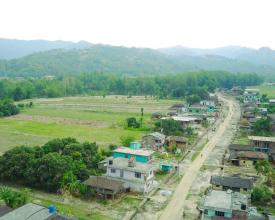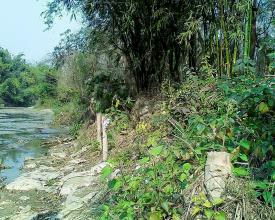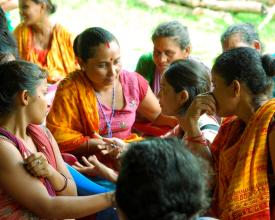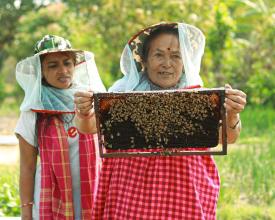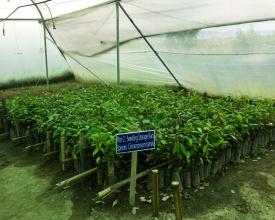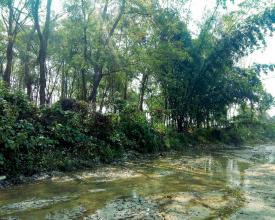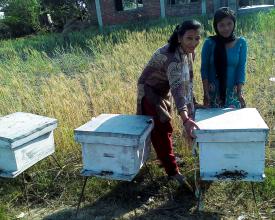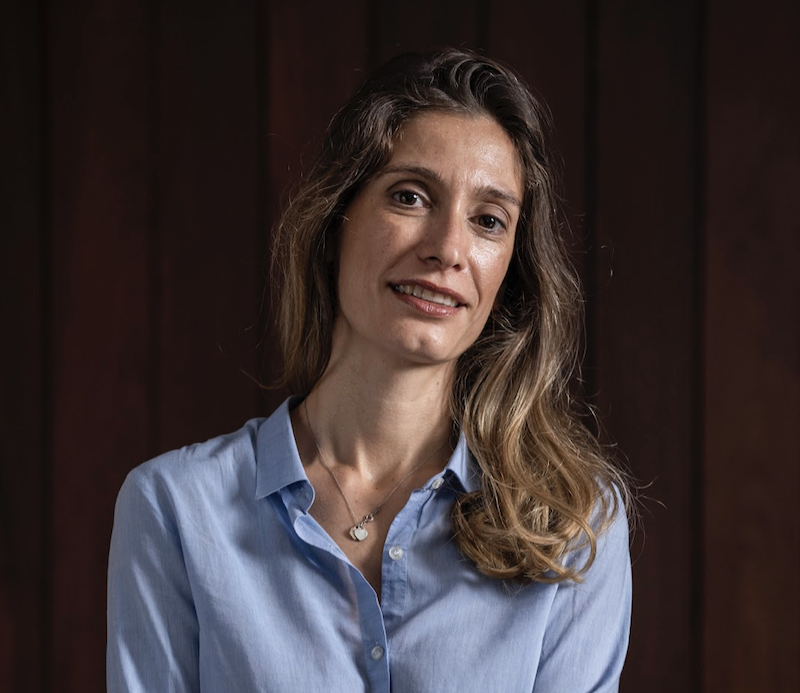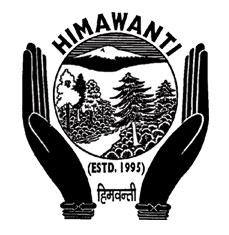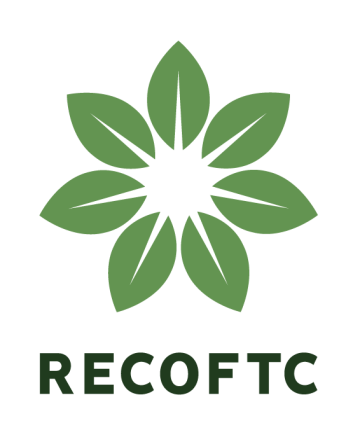
Améliorer les moyens de subsistance, lutter contre les inégalités entre les sexes et s'adapter au changement climatique dans une forêt communautaire dirigée par des femmes à Bishnupur, au Népal
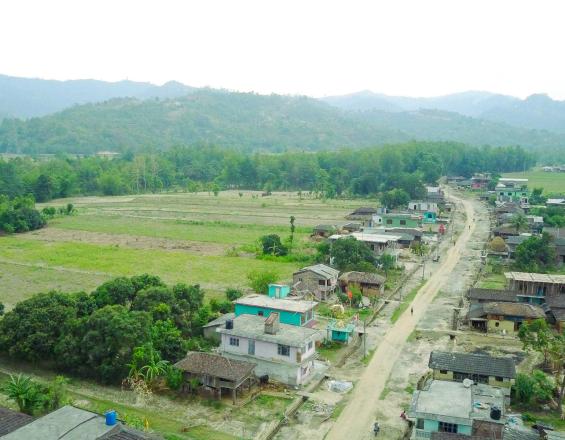
En 2014, RECOFTC a mis en place un projet à Bishnupur pour montrer comment la foresterie communautaire renforce l'autonomie des femmes et favorise l'adaptation au changement climatique. La foresterie communautaire est un terme général désignant les approches qui permettent aux populations locales de gérer et de protéger les forêts et d'en tirer profit. Le projet a été développé avec le groupe d'utilisateurs de la forêt communautaire de Bishnupur, dirigé par des femmes. RECOFTC, le gouvernement local et les agences sectorielles ont aidé le groupe à appliquer une approche participative dans l'évaluation de la vulnérabilité climatique, ainsi que dans l'identification et la mise en œuvre d'actions prioritaires. Ils ont protégé les terres agricoles des inondations en plantant des arbres, installé des bio-emblais pour stabiliser les berges des rivières qui s'effondrent, investi dans des puits pour améliorer l'approvisionnement en eau, et introduit l'agroforesterie et l'apiculture pour diversifier les moyens de subsistance. La communauté a amélioré sa résilience et réduit sa vulnérabilité aux chocs climatiques et autres. Le projet a permis aux femmes de devenir des leaders, des décideurs et des bénéficiaires financiers. L'impact transformateur a conduit les femmes des communautés voisines à adopter des pratiques similaires.
Contexte
Défis à relever
L'environnement
La production de canne à sucre réduit la qualité des sols et la disponibilité de l'eau. La déforestation et le changement d'affectation des sols exacerbent les effets du changement climatique. Ces effets comprennent des crues soudaines annuelles qui érodent les berges des rivières et ont entraîné la perte d'environ 30 hectares de terres. L'irrégularité des saisons et la variabilité des précipitations aggravent l'insuffisance des ressources en eau. Les espèces envahissantes menacent les espèces indigènes de la forêt.
La société
Les inégalités entre les sexes sont marquées à Bishnupur, avec des charges de travail ménager inégales entre les hommes et les femmes. Ce fossé s'est creusé avec la diminution des sources d'eau et les femmes ont dû passer jusqu'à deux heures de plus par jour pour aller chercher de l'eau. Les femmes n'ont également qu'une voix limitée dans les espaces de prise de décision. L'inégalité d'accès aux ressources en eau entre les ménages relativement aisés et les ménages plus pauvres a créé des tensions sociales.
La situation économique
La pauvreté est très répandue. Les revenus tirés de la principale culture de rapport, la canne à sucre, sont en baisse. La dépendance à l'égard de l'agriculture accroît la vulnérabilité, car la productivité des exploitations diminue.
Emplacement
Traiter
Résumé du processus
Les éléments constitutifs sont les trois phases principales de l'adaptation au changement climatique basée sur la foresterie communautaire. Elles se déroulent dans l'ordre. D'abord, l'évaluation de la vulnérabilité et l'identification des thèmes d'adaptation. Vient ensuite l'évaluation de la faisabilité des options d'adaptation spécifiques. Au cours de cette deuxième phase, les options d'adaptation intégrées potentielles sont identifiées, et les priorités et les possibilités de financement sont étudiées. Dans le cadre de cette phase, des propositions de projets sont élaborées et des engagements sont pris avec les institutions partenaires. Dans la troisième et dernière phase, les interventions sont mises en œuvre. Les activités donnent la priorité aux ménages pauvres, aux groupes ethniques et aux castes défavorisés, ainsi qu'aux femmes. Un suivi participatif est assuré tout au long des trois phases du processus. Le processus s'achève par une évaluation.
Blocs de construction
Évaluation participative de la vulnérabilité climatique
L'objectif est de comprendre les vulnérabilités aux impacts du changement climatique. À la suite d'un processus de consentement libre, préalable et éclairé avec les parties prenantes, l'évaluation de la vulnérabilité au niveau communautaire identifie les menaces et les impacts climatiques, évalue les menaces et les impacts sur les moyens de subsistance de la communauté et identifie les vulnérabilités et les sujets de réponse à ces vulnérabilités.
À Bishnupur, un coordinateur local a soutenu l'évaluation pendant six mois. Une travailleuse de terrain de l'Himalayan Grassroots Women's Natural Resource Management Association a consulté les femmes parties prenantes, car il était perçu comme inapproprié que des travailleurs masculins s'engagent auprès des femmes.
Une série de matrices permet de collecter, d'organiser et d'évaluer clairement le changement climatique et les informations socio-économiques afin d'évaluer les vulnérabilités. Chaque matrice s'appuie sur les informations recueillies dans la précédente. Les variables climatiques et les secteurs exposés analysés dans les matrices dépendent de facteurs spécifiques au site.
Les matrices sont complétées à l'aide de données primaires et secondaires. Les données primaires proviennent de l'évaluation rurale participative et de la recherche-action participative. Les lignes directrices et les plans opérationnels des groupes d'utilisateurs des forêts communautaires, les bureaux du gouvernement au niveau du district et les instituts de recherche sur les forêts et l'utilisation des terres fournissent des données secondaires.
Facteurs favorables
Au Népal, les groupes d'utilisateurs des forêts communautaires utilisent des processus participatifs et détiennent les informations socio-économiques et biophysiques nécessaires à l'évaluation de la vulnérabilité. Les parties prenantes doivent être disposées à travailler ensemble - le gouvernement local et les agences sectorielles telles que le bureau forestier du district ont soutenu le processus à Bishnupur. Il est essentiel de faire appel à un facilitateur expérimenté et sensible au contexte local. Il doit être familiarisé avec les aspects complexes de l'évaluation de la vulnérabilité climatique et capable de créer un espace et des opportunités pour reconnaître la pertinence des voix de la communauté.
Leçon apprise
Le manque de données empiriques est un obstacle à la mise en œuvre d'évaluations de la vulnérabilité aux niveaux local et communautaire. Les outils participatifs permettant de cartographier les tendances climatiques peuvent aider à surmonter ce problème dans une certaine mesure. Les données empiriques restent importantes pour analyser et valider les informations partagées par les membres des communautés.
Par exemple, la communauté de Bishnupur a interprété les tendances climatiques comme menant à la sécheresse. Le nombre de jours de pluie avait diminué, mais les données météorologiques montraient que les précipitations globales avaient augmenté. Après avoir informé la communauté de cette constatation, le projet a donné la priorité à la gestion et au captage de l'eau en tant que domaine d'intervention clé.
Les processus d'évaluation de la vulnérabilité climatique peuvent être l'occasion de sensibiliser les membres de la communauté et les autres parties prenantes au changement climatique. Des représentants des autorités locales et des agences sectorielles ont été invités à participer au processus d'évaluation de la vulnérabilité à Bishnupur. Ils ont contribué à l'analyse et ont bénéficié d'une compréhension nuancée de la manière dont le changement climatique affecte les communautés et des mesures à prendre. Cela a permis d'obtenir leur soutien pour la mise en œuvre d'interventions d'adaptation.
Co-production de l'évaluation de la faisabilité de l'intervention d'adaptation
Une évaluation de faisabilité utilise les données fournies par les membres des groupes d'utilisateurs des forêts de la communauté et d'autres parties prenantes pour identifier les mesures d'adaptation.
Tout d'abord, les membres du groupe d'utilisateurs de la forêt communautaire et les facilitateurs examinent l'évaluation de la vulnérabilité climatique et les thèmes d'intervention identifiés. L'évaluation identifie au moins trois thèmes sur la base des menaces climatiques, des vulnérabilités et des capacités d'adaptation détectées. Chaque thème est une stratégie d'adaptation générale assortie d'actions.
Les facilitateurs utilisent ensuite un modèle d'évaluation des thèmes pour aider les membres des groupes d'utilisateurs des forêts de la communauté à rechercher une expertise technique et à rassembler les informations dans un seul document "instantané" pour permettre la sélection d'une action plus détaillée. Les facilitateurs peuvent utiliser l'évaluation de la vulnérabilité climatique pour rédiger à l'avance des informations sur les moyens de subsistance existants.
Dans une dernière étape, les facilitateurs travaillent avec les membres des groupes d'utilisateurs des forêts de la communauté pour dresser la liste des compétences et des experts pour les thèmes d'intervention. Les facilitateurs mettent à jour la liste, si nécessaire, en tenant compte d'un large éventail de parties prenantes et de prestataires de services. Les matrices finales énumèrent les options de réponse pour chaque sujet et sont complétées sur la base des informations fournies par les participants cibles. Cette section peut nécessiter la collecte d'informations auprès de consultants techniques et/ou de prestataires de services.
Facteurs favorables
Alors que les évaluations de la vulnérabilité devraient être participatives, les évaluations de faisabilité nécessitent une expertise technique pour déterminer quelles options sont pratiques et efficaces. Cela implique probablement de faire appel à des ingénieurs, des hydrologues, des agronomes et d'autres agences ou consultants. L'implication des organisations gouvernementales et non gouvernementales dans une évaluation de la vulnérabilité réduira les efforts nécessaires à l'évaluation de la faisabilité, en fournissant des informations sur les mesures potentielles déjà disponibles ou mises en œuvre, les technologies requises, les coûts et les sources de soutien possibles.
Leçon apprise
Les groupes communautaires d'utilisateurs de la forêt peuvent réaliser des évaluations de faisabilité, avec l'appui technique des agences de soutien. Le leadership des femmes garantit que les interventions prennent suffisamment en compte les impacts et les bénéfices pour elles et pour d'autres groupes marginalisés tels que les ménages pauvres et les minorités ethniques.
Au Népal, de nombreuses agences locales sont chargées de soutenir l'adaptation au climat. C'est pourquoi l'identification et l'engagement d'agences techniques constituent une occasion précieuse d'élaborer des plans de cofinancement. Les demandes d'apports techniques renforcent les arguments en faveur d'un soutien financier aux interventions.
Mise en œuvre d'interventions d'adaptation fondées sur les écosystèmes
L'objectif est d'utiliser les interventions basées sur la nature identifiées par l'étude de faisabilité pour s'attaquer aux sources de vulnérabilité climatique. Pour ce faire, les dirigeants du groupe communautaire d'utilisateurs de la forêt mobilisent des ressources et des personnes, et travaillent avec des organisations partenaires identifiées dans l'étude de faisabilité pour accéder aux ressources et à la technologie.
À Bishnupur, les femmes dirigeantes du groupe d'utilisateurs de la forêt communautaire ont travaillé avec RECOFTC pour acheter environ 300 plants de manguiers et de litchis à des prix subventionnés auprès du centre régional de développement de l'horticulture. RECOFTC a fourni des ruches et une formation à l'apiculture.
Pour faire face aux pénuries d'eau et protéger les sources d'eau existantes, le groupe d'utilisateurs de la forêt communautaire a obtenu un soutien technique et financier du Bagmati Irrigation Project du gouvernement pour installer un puits profond. RECOFTC et le groupe d'utilisateurs de la forêt communautaire ont couvert le déficit financier.
Pour stabiliser les berges de la rivière, les membres du groupe d'utilisateurs ont construit un mur de soutènement composé de pierres et de sacs de sable surmontés de bambous vivants et d'autres plantes le long d'un kilomètre de la rivière. Ils ont planté 200 rhizomes de bambou et 4 000 plants de cultures fourragères provenant de l'Office des forêts du district et de l'Office de conservation des sols du district, ainsi que de l'herbe à croissance rapide et à usages multiples disponible localement.
Facteurs favorables
Le processus a été mené localement. L'appropriation locale a contribué à ce que les chefs forestiers de la communauté de Bishnupur explorent eux-mêmes les possibilités de soutien. La facilitation par un tiers est importante, car les propositions d'une communauté peuvent ne pas être les plus sensibles au climat, ou optimales pour les communautés voisines et leur propre résilience au climat. Le soutien politique est crucial. Par exemple, le programme d'action national d'adaptation du Népal stipule que 80 % des ressources destinées à l'adaptation au climat doivent aller au niveau local, ce qui a facilité l'accès au financement.
Leçon apprise
Un groupe communautaire d'utilisateurs de la forêt constitue une institution solide et autonome qui dispose, dans une certaine mesure, des ressources nécessaires à la mise en œuvre des interventions. Ces groupes disposent de réseaux solides qui peuvent les aider à accéder à des ressources supplémentaires et à un soutien technique si nécessaire.
L'adaptation au climat menée par les femmes permet de lutter contre les inégalités entre les sexes et la vulnérabilité au climat, en particulier celle des femmes et des membres les plus pauvres d'une communauté.
Impacts
Le projet a permis d'augmenter le couvert végétal et de diversifier les revenus en fournissant 300 manguiers et litchis, 1 000 arbres à beurre (nom local chiuri) et 500 lauriers indiens (nom local tejpat). Les revenus annuels ont augmenté en moyenne de 45 000 roupies (450 dollars), soit environ 18 %, pour six familles qui ont reçu des ruches et un soutien technique pour produire du miel.
Le forage d'un puits profond a amélioré l'accès à l'eau pour 64 ménages à des fins domestiques et agricoles sur 30 hectares, réduisant ainsi la vulnérabilité à la variabilité des précipitations. Les relations avec les autorités locales se sont améliorées car un projet d'irrigation mené par le gouvernement a cofinancé le puits.
Le projet a permis de stabiliser un tronçon d'un kilomètre de berge, à l'aide de sacs de sable et de pierres renforcés par une plantation de bambous, afin de réduire l'érosion en cas de fortes pluies ou de crues soudaines. Depuis 2015, il n'y a pas eu d'érosion des berges malgré les crues soudaines annuelles. Il y a eu moins de limon et de débris déposés sur les 45 hectares de forêts, de fermes et d'habitations du village.
Le projet a renforcé la cohésion de la communauté, en atténuant les tensions sociales liées à l'accès à l'eau. Il a permis de réduire les inégalités entre les sexes et de donner aux femmes les moyens de jouer un rôle de premier plan dans l'adaptation au changement climatique. La préparation et la mise en œuvre d'un élément de réponse au changement climatique dans le plan de gestion de la forêt communautaire ont permis d'intégrer l'adaptation et de garantir que la forêt stocke environ 888 tonnes de carbone. Trente-neuf autres communautés dans trois districts reproduisent à présent ces efforts
Bénéficiaires
- Onze femmes dirigeant le groupe d'utilisateurs de la forêt communautaire de Bishnupur et 63 familles (359 personnes) membres du groupe.
- 778 personnes actives dans des entreprises communautaires soutenues par d'autres projets.
Objectifs de développement durable
Histoire
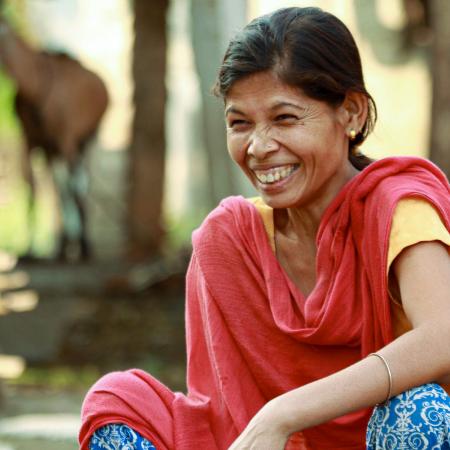
Mausami Uprety et son mari Wakil Mainali vivent à Bishnupur avec leurs deux jeunes filles. Avant que le Centre régional de formation en foresterie communautaire pour l'Asie et le Pacifique (RECOFTC) ne mette en œuvre son projet, la famille vivait dans une extrême pauvreté.
"Nous cultivions des légumes et travaillions dans les fermes des autres pour gagner notre vie", explique Uprety. "C'était très difficile dans le passé. Il n'y avait pas de travail ni de source de revenus à utiliser en cas de besoin."
Le changement climatique a ajouté à la précarité de l'existence de la famille. Mme Uprety explique que sa communauté a été touchée par des inondations de plus en plus graves et par la dégradation des sols. Mais lorsqu'elle a rejoint le groupe d'utilisateurs de la forêt communautaire de Bishnupur, d'autres femmes lui ont parlé des possibilités offertes par l'apiculture. Grâce au soutien de RECOFTC en matière de renforcement des capacités techniques et de gestion, Uprety et cinq autres nouveaux apiculteurs ont pu assurer la pérennité de leur entreprise.
"J'ai découvert que l'apiculture est une entreprise à faibles intrants et à revenus élevés", explique-t-elle. "Elle fournit un revenu régulier, ce qui est bon pour les familles pauvres. C'est une bonne chose pour les familles pauvres.
"Avant, je n'avais qu'une seule chèvre", ajoute-t-elle. "Après avoir commencé à gagner de l'argent grâce à l'apiculture, j'ai pu agrandir le troupeau de chèvres. Le miel est également une source de nourriture pour mes enfants.
Grâce à l'apiculture et à d'autres pratiques agroforestières, les agriculteurs comme Uprety ne sont plus tributaires d'une seule source de revenus.
"Au lieu de planter de la canne à sucre, j'ai commencé à planter des mangues sur mes terres", explique Bishnu Mahat, membre du comité exécutif du groupe d'utilisateurs de la foresterie communautaire des femmes de Bishnupur. "La canne à sucre consomme trop d'eau et assèche la terre, tout en réduisant la productivité. Je m'attends à ce que la mangue soit plus rentable que la canne à sucre et qu'elle me permette de diversifier mes sources de revenus."
Le succès du projet Trees and Bees de RECOFTC à Bishnupur s'est propagé. Des programmes gouvernementaux reproduisent le projet dans les districts voisins de Siraha et de Saptari. Les programmes soutiennent maintenant d'autres personnes qui luttent pour maintenir leurs moyens de subsistance en leur fournissant une formation et une assistance technique pour commencer à pratiquer l'apiculture.

